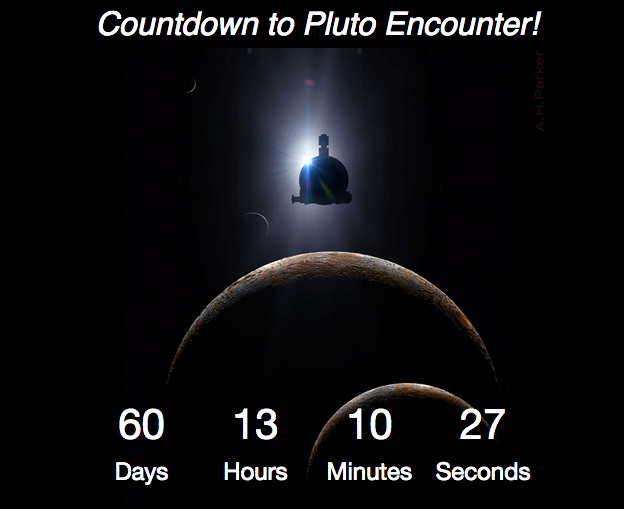
week 3: computer-controlled cutting
week 4: electronics production
week 5: 3D scanning & printing
week 8: computer-controlled machining
week 13: networking & communications
week 14: interface & application programming
week 15: applications & implications
week 16: mechanical design & machine design
This week we're "nailing down" our final projects - exciting (and maybe a little scary)! The assignment is essentially answering a series of questions that will define the project. I actually really like planning, so I'm excited to be figuring this stuff out. So here goes...
The project (clever title TBD) will consist of visual representations of up to four active spacecraft plus a digital display for each (a small OLED screen). The displays will show some kind of real-time data from each spacecraft, e.g. an arrow and the words "Look up!" when the ISS is passing overhead, or a countdown showing how long until New Horizons enters orbit around Pluto. The project will be modular, so as new spacecraft are launched and older ones are retired, they can be swapped in and out. The project will be displayed in my classroom next year, and my hope is that it will be something my students look at and talk about on a regular basis, and will increase their awareness of space exploration.
The ISS tracker is one of many online applications to find the position of the ISS. Given your latitude and longitude, you can even have emails sent to you to let you know when it will be overhead.
See Pluto Now is, again, one of several places online to count down to this summer's encounter with Pluto.

There are similar online resources to keep track of Cassini, Juno, Curiosity, and pretty much every ongoing mission. What I would like my project to do is to collect these in one visual display that will be always in front of my students (instead of something they have to actively decide to visit online).
For the form factor, there are several projects from last year that are helping me think about what I'd like my project to look like:
For the electronics, I will make a small network where a Raspberry Pi connects to the internet and gets the data, then sends the data to individual OLED boards to be displayed. For the housing, I will make either a laser-cut base and several 3D printed models, or a flat machined base made from MDF and several laser-etched plaques.
Pretty much all the supplies will come from AS220, though I do have a Raspberry Pi at home I can use, and I may also have to order the OLED screens.

I put together a tentative schedule, that would get me to a display with two spacecraft.

I'll know the first iteration of the project is successful if it displays real-time data from the ISS. The bigger goal is to make it work for four spacecraft, and to house it in an attractive display in which new spacecraft can be easily swapped in and out. The ultimate goal - how I'll really know it's successful - is if the displays spark ongoing interest and discussion from my students around space exploration.
Jenny Kostka Fab Academy 2015
